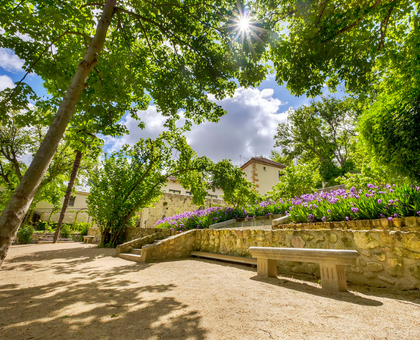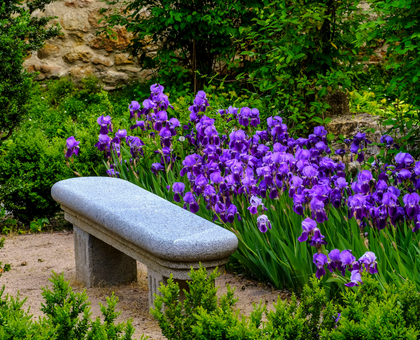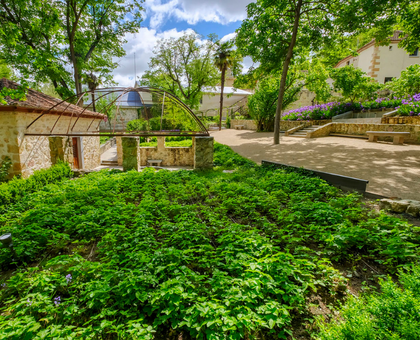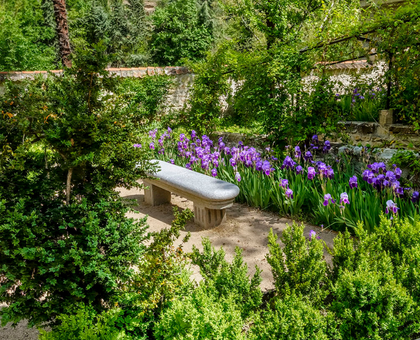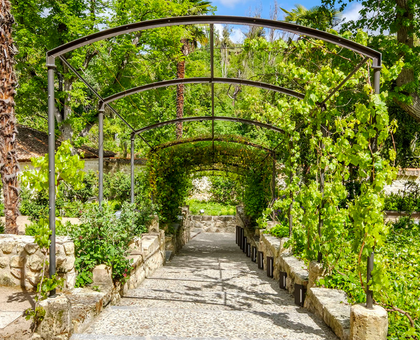The Mint is not only an extraordinary building of industrial architecture which has miraculously survived to the present day, but it also preserves the small jewel of an intimate garden conceived for the personal enjoyment of Philip II. The garden is located at the western end of the Segovian mint complex and continues to be a secret garden of secluded spaces, aimed at the five senses, in the purest Renaissance tradition.
Philip II had the King's garden built in order to enjoy it during his visits to the Royal Mint. It was, and still is, a place for strolling, reflection, integration with nature and fishing, an activity which the king was particularly fond of.
It has undergone various modifications throughout its five hundred years of history, especially from the time of Isabella II, but the original Renaissance traces remain.
The king's garden was conceived according to the orchard garden typology, a concept that dates back to ancient Persia and in which water was of the utmost importance: without water there is no garden, without water there are no plants, no flowers, no insects, no birds... Nothing.
The ideal thing about this garden is that in summer the trees are lush. Strolling through it, you can enjoy the scent of the lilacs and syringas in spring or the quince trees at the beginning of autumn... What is certain is that you will enjoy the sun in winter and lovely, cool shade in summer, as all the tree species are deciduous.
Let yourself drift along the twists and turns, and enjoy the balance of its geometry, integrated with the subtle colours of the flowers and plants. At the bottom, a carpet of woodland strawberries surrounds the fishing pavilion, dotted with purple hyacinths. There too, under a maple tree, white and intense syringas grow.
Towards the central pergola is the Damask rose area where honeysuckle also grows. On the other side of the pergola is the boxwood area, with hundred-year-old trees, lilies and also French roses. By the river, a Judas tree stands on a carpet of primroses, fleabanes and columbine flowers.







